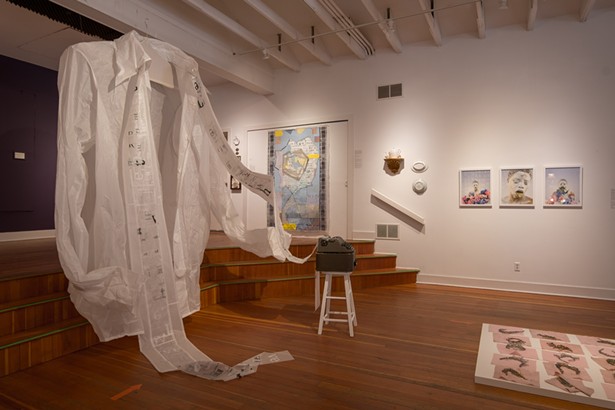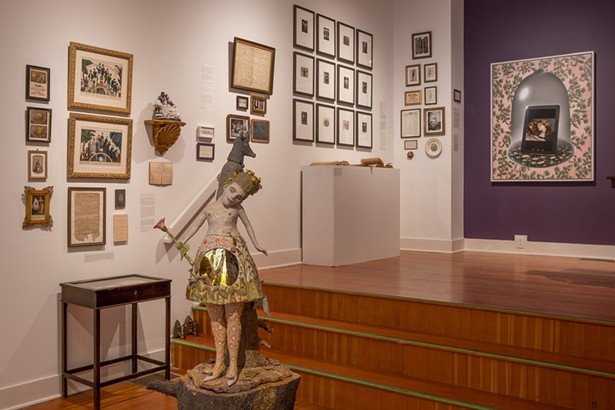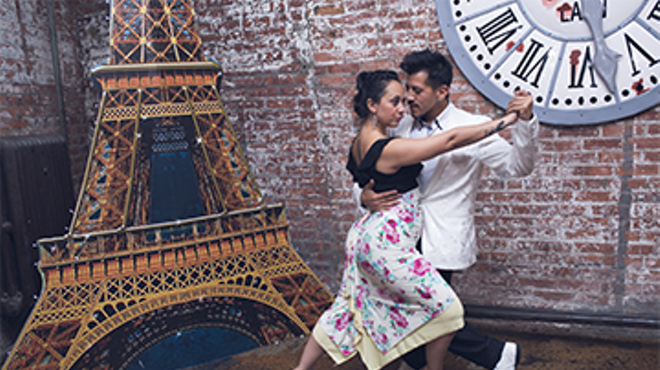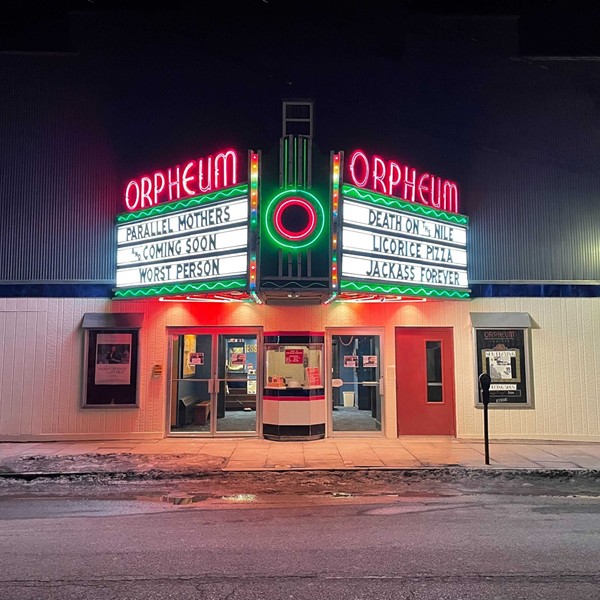
An American flag drawing with naked female breasts that take the place of the 50 stars, a monumental blouse with a “pussy bow,” and a series of elegantly provocative photos of women’s corsets that look more like armor than undergarments—these are a few of the fearless artworks included the “Hermerica” exhibition currently on view at the Byrdcliffe Guild’s Kleinert/James Center for the Arts in Woodstock (through April 25). Organized and curated by Carrie Feder with assistance from the artist Portia Munson, this inquisitive and offbeat mash-up of art and artifacts is a multidisciplinary exhibition that presents the work of 27 women artists, including Kiki Smith, Katrina Majkut, Rose Deler, Kate Hamilton, Ruby Palmer, Liza Todd Tivey, Tricia Wright, Melora Kuhn, and Lola Jiblazee, among others.
“Hermerica” offers a motley vision of woman’s journey through aspects of history and popular culture as seen through the artist’s imagination, including works on paper, installation, sculpture, photographs, stitching, memorabilia, ephemera, and other historical objects. The curatorial narrative highlights how our collective past is a potent reflection of the persistent issues gripping our country—freedom, respect, race, gender, reproductive health, voting rights, and radical reform remain at the forefront of our social-political landscape. History, her-story, America, Hermerica.

While this show is both informative and inspirational, woven throughout are moments of trauma that cannot be overlooked, such as Kathy Ruttenberg’s stoneware sculpture Mon Coiffure, (2019). A male figure dressed in a suit with a buck’s head stands atop a stump as he caresses the hair of a sylvan female whose belly houses a disturbing scene of internal darkness—within the floral pattern of her spring dress a small cavern reveals a naked girl on her back and frozen with fear as a deer investigates her groin. I have been a fan of Ruttenberg’s fairytale-meets-quasi-Freudian-psycho-sexual mythology for years; however, the sudden shock of this disturbingly intimate moment is even more impactful in the context of this show. Given the outrageous political circus of the recent ruling party—where “grab ‘em by the pussy” became a nationally recognized slogan for the degradation of women—the creepy intensity of Ruttenberg’s spectacle is compellingly perverse.
The most powerful theme of the “Hermerica” story is that of slavery, “an empire of sin” as written in one of the pieces of ephemera included in this exhibit. In a grouping of caricatures and postcards near the front of the gallery, a drawing depicts a black woman being sold away from her child. The event is gruesome and cruel, yet the show balances this disgust with a sense of beauty and poise as reflected in a trio of sumptuous, colorful photographs by Corrine Spencer, Bodies of Plenty: Harvest (2013). Of the three works, on the left side of the triptych we behold a beautiful black female covered in a glittering frosty glaze, her naked body shielded by an enormous medley of flourishing spring flowers made of plastic. I stood looking at her for some time, experiencing the sense of tension as described in the caption next to the work, that of naturalness versus artificiality.
Taken together, this show is an engaging patchwork of ideas and artworks that address some of the significant issues of the last century and today while presenting those issues through a multiplicity of female voices and visual mediums. The exhibition succeeds at honoring the past, bringing that past forward, and pushing the “forward” even further. “Hermerica” is a courageous and candid look at the reality of women in America as told by women in America.

















